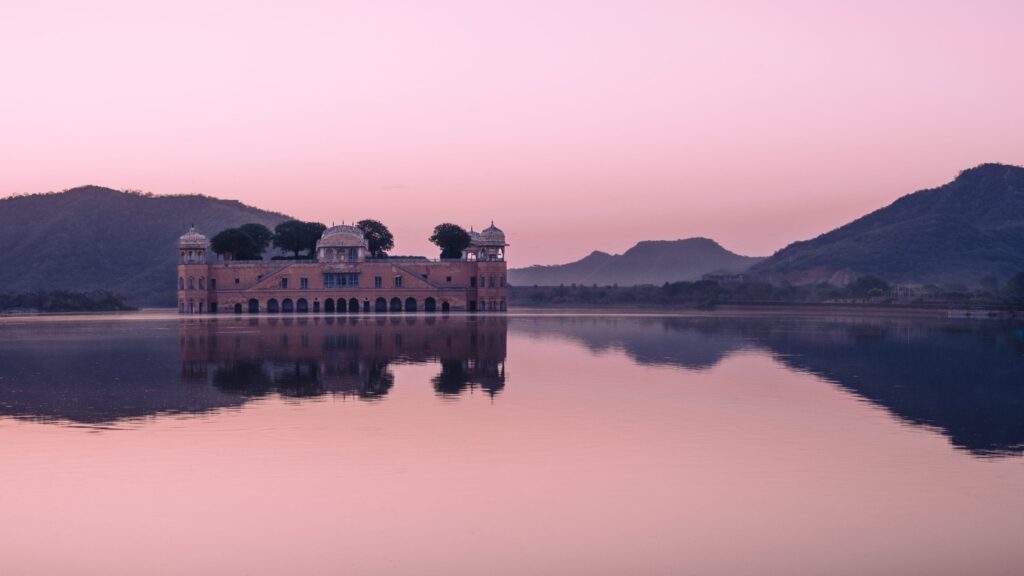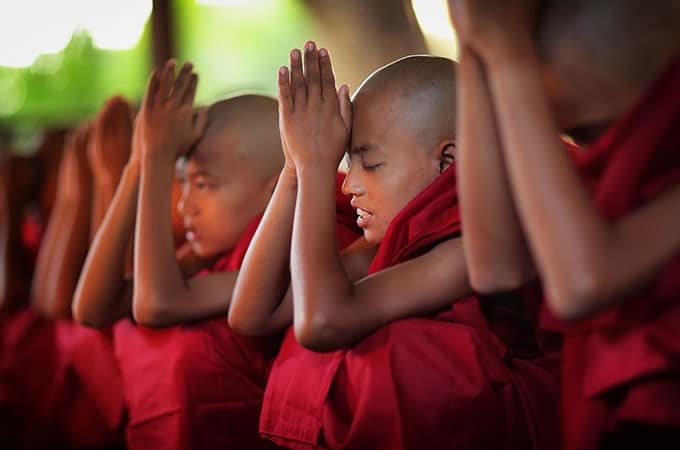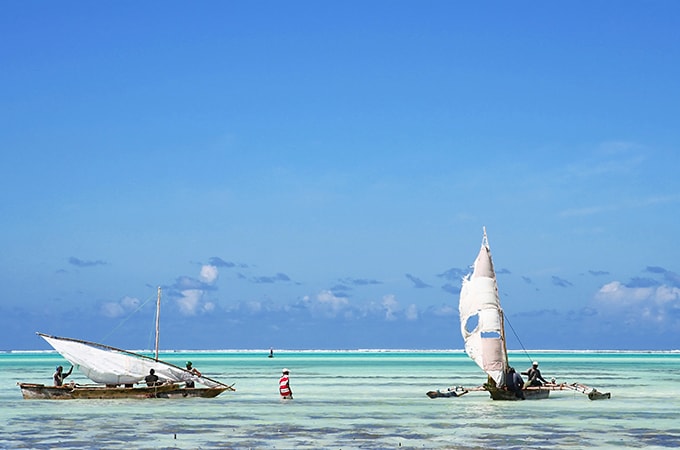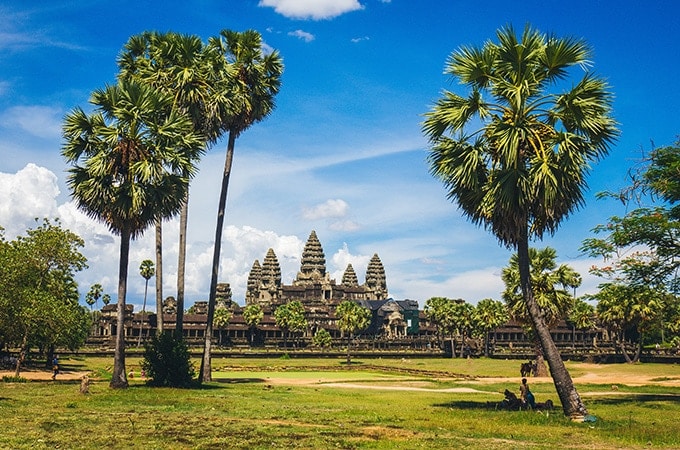Words: Tanya Joslin Photography (except where stated): Tony Joslin
From the sound of chanted prayers and honking horns to the breathtaking Taj Mahal, India’s Golden Triangle offers a truly immersive experience, writes Tanya Joslin. Embark on a spellbinding journey through India’s cultural treasures and experience a world of colour, rituals, and iconic monuments with this ultimate Golden Triangle travel guide and itinerary.
With so much to see and do, planning a trip to India can be pretty overwhelming for first-time visitors. My husband and I had wanted to travel to India for some time before finally taking a closer look at the country’s famous ‘Golden Triangle‘: Delhi, Jaipur, and Agra. Offering a wealth of incredible sights and experiences along a well-trodden path, the Golden Triangle seemed perfect for first-timers.
And we were proved right! Our journey left us with a deep appreciation for the country’s rich culture, breathtaking architecture, and delicious cuisine. It only fuelled our desire to explore more of this incredible land and inspired us to share what we learned so other first-time visitors to India will take the plunge and plan their own fabulous Golden Triangle itinerary!
Exploring the Golden Triangle: A First-Timer’s Itinerary
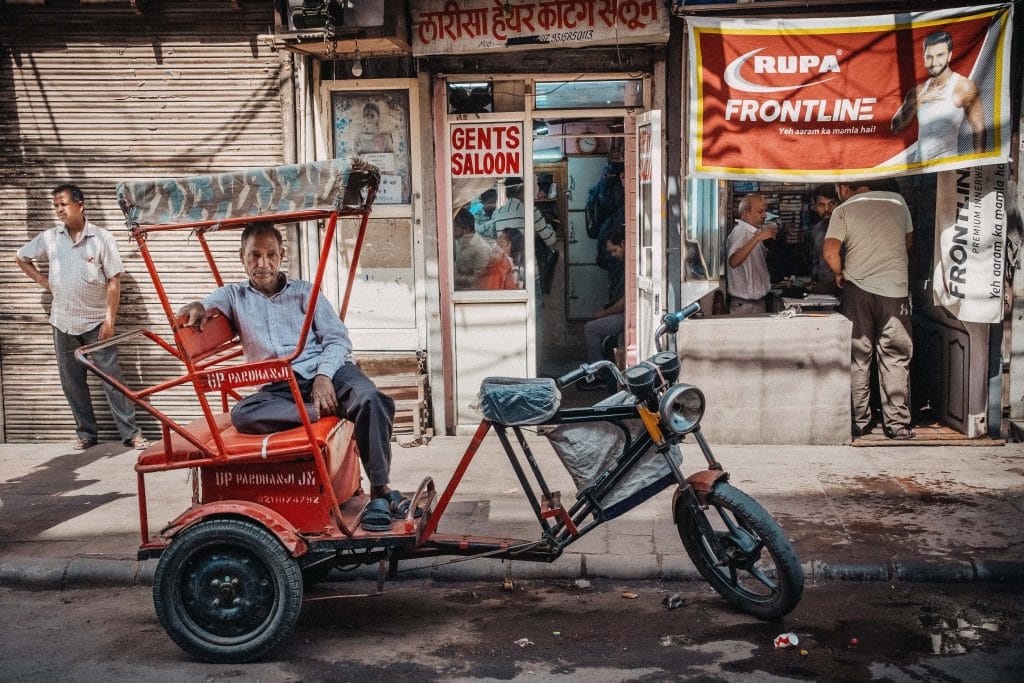
We’ve done the research, taken the journey, and explored The Golden Triangle and beyond to provide you with the most detailed and helpful guide possible. From must-see attractions to hidden gems, this travel guide gives you everything you need to know to plan the perfect holiday or honeymoon.
Travel note: You can explore the Golden Triangle in any order — but most international travellers start in the historic capital of Delhi (home to the international airport). We journeyed from Delhi through the colourful state of Rajasthan to vibrant Jaipur, arrived in Agra to marvel at the Taj Mahal, then completed the triangle back in Delhi.
Why is it called the Golden Triangle?
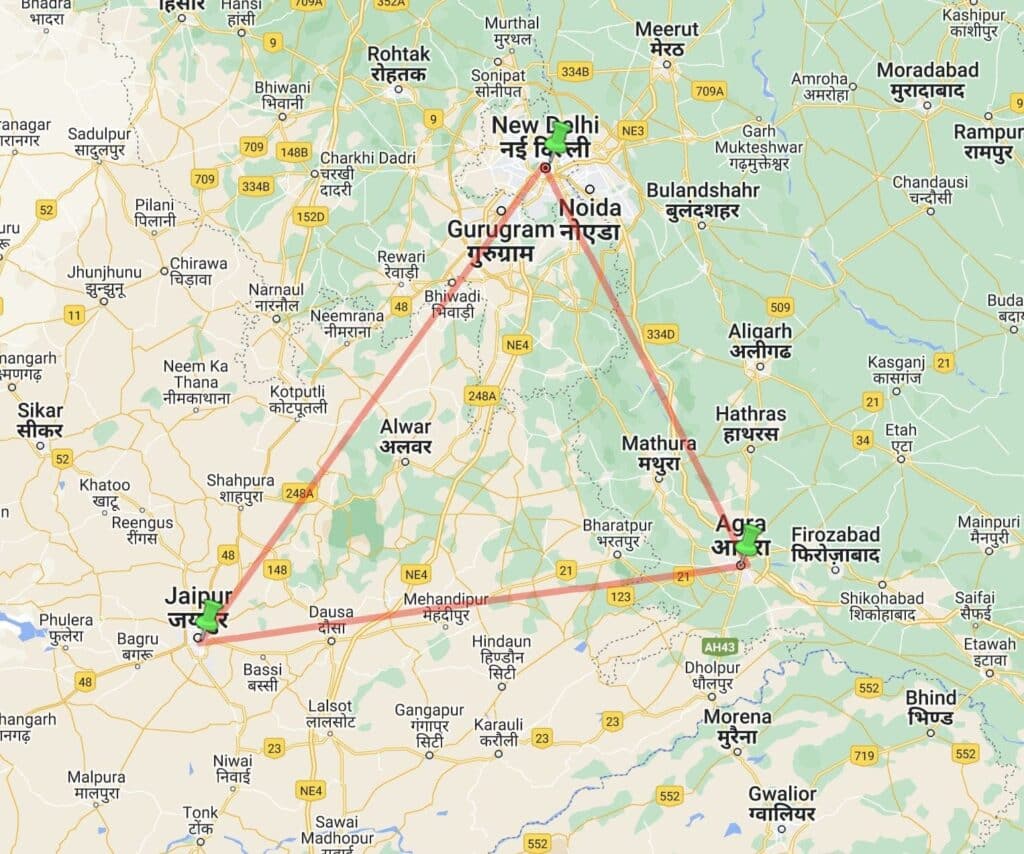
The name refers to the triangular shape formed by the three cities, Delhi, Agra and Jaipur, on a map. This famous tourist trail in northern India offers a treasure-trove of historical and cultural wonders, ranging from Mughal forts and mausoleums to palaces, mosques, and temples.
Is the Golden Triangle good for a romantic getaway?
We were celebrating a birthday and believe it’s a perfect destination for couples seeking a romantic getaway, particularly if you both love exploring new places rather than lounging poolside all day.
One of the best parts about the Golden Triangle is that you can experience this incredible trip on a budget or splurge on a few indulgences (such as India’s opulent hotels), to elevate your adventure into a spectacular couples’ getaway.
You can also choose to explore the Golden Triangle independently, book guides in each location, or engage the services of a travel company to take you from beginning to end.
When is the best time to visit the Golden Triangle?
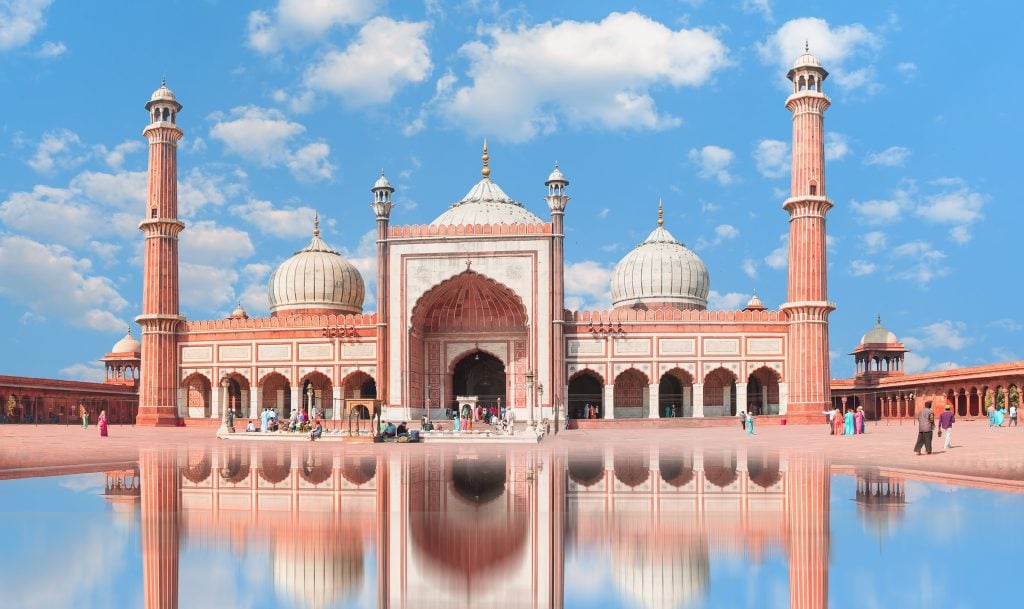
During the winter months, from October to March. The weather is cooler, making exploring the cities and their attractions easier. However, this is also peak tourist season, so expect larger crowds and higher prices. If you prefer to avoid crowds, consider the shoulder seasons of April and June or September and November. We visited in the first couple weeks of April, and it was warm but not too hot yet.
What are the must-see attractions of the Golden Triangle?
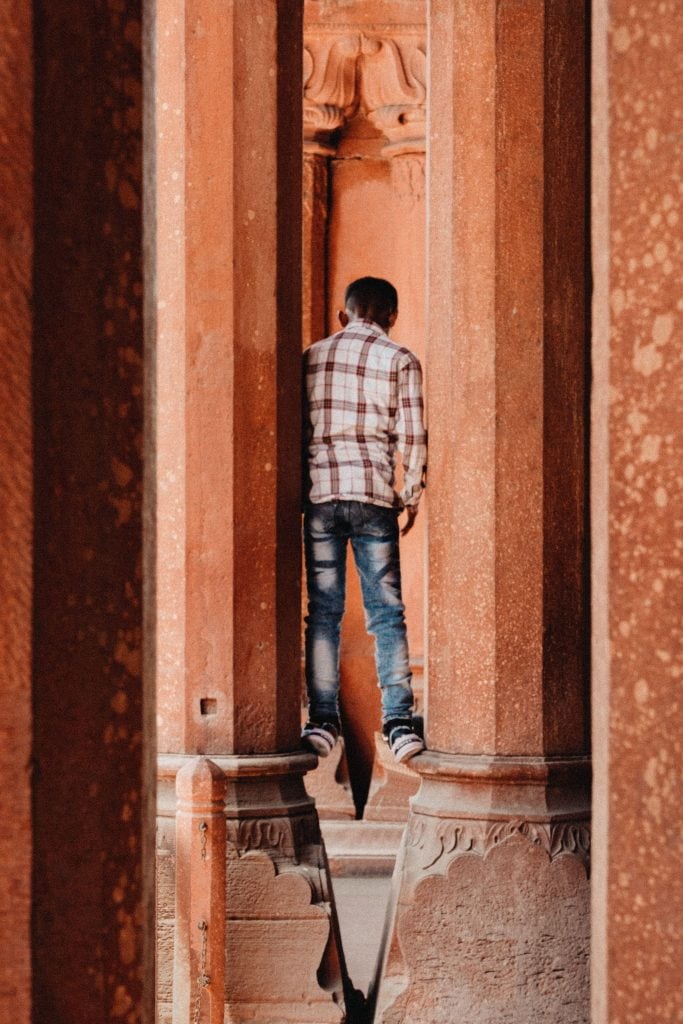
We’ll go into more depth as we break down your Golden Triangle itinerary below. But, at a glance, you won’t want to miss:
In Delhi, the Red Fort, Jama Masjid, and the Lotus Temple.
Agra is home to the world-famous Taj Mahal and the Agra Fort.
And in Jaipur, the Amber Fort, Hawa Mahal, and City Palace are must-see destinations.
How many days do you need for the Golden Triangle?
While some suggest rushing through India’s Golden Triangle in as little as three days, we recommend taking your time to fully immerse yourself in the region’s incredible monuments, sites, and sounds. After all, it’s your holiday or honeymoon, and you deserve some time to relax and enjoy.
We recommend a minimum of seven days. This allows for a more relaxed pace and some time to adjust to the new time zone and surroundings. Our seven-day itinerary was packed with activities but allowed us to enjoy the trip without feeling overwhelmed, leaving us with a clear idea of which places we wanted to revisit and explore in greater depth.
Related: Your Ultimate Guide to India’s Must-See Landmarks ~ A Journey Through Time
A 7-Day Golden Triangle Itinerary:
Day One: Arrive in and settle into New Delhi.
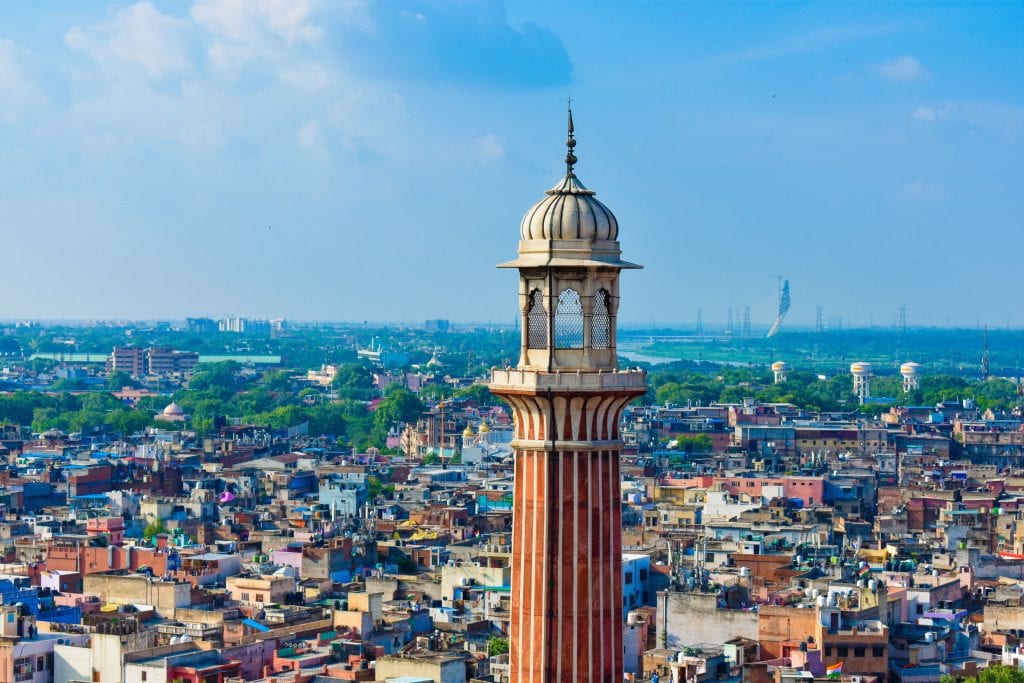
Our flight landed in the evening, so we headed straight to our hotel. If you arrive earlier, consider spending a reasonable amount on a decent hotel to get over any jetlag and ease into India in style.
Where to stay in Delhi
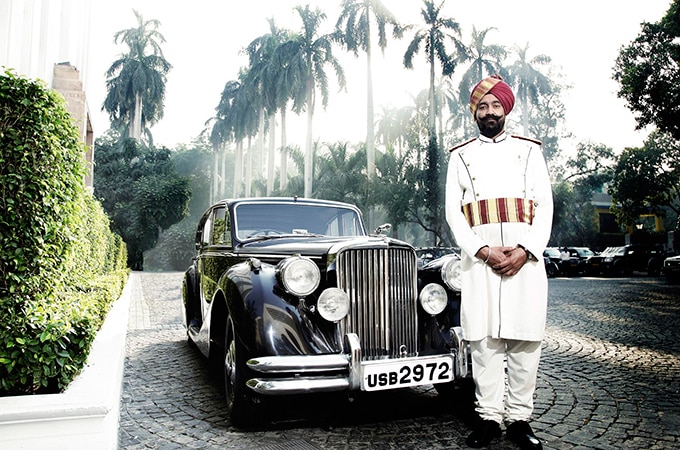
Splurge:
The Imperial Delhi
For a couple’s getaway in Delhi, you have to have this grand dame on your list. While it takes cues from 19th-century Indian palaces, this urban beauty was opened in 1936 and blends Victorian and Art Deco styles with that of Edwin Lutyen, the British architect responsible for much of the ‘New Delhi’ aesthetic. Steeped in colonial-era history, this heritage charmer is still imbued with plenty of modern comforts, including a fleet of luxury cars to ferry you around the city.
Step inside The Imperial Delhi here with our comprehensive review.
Haveli Dharampura
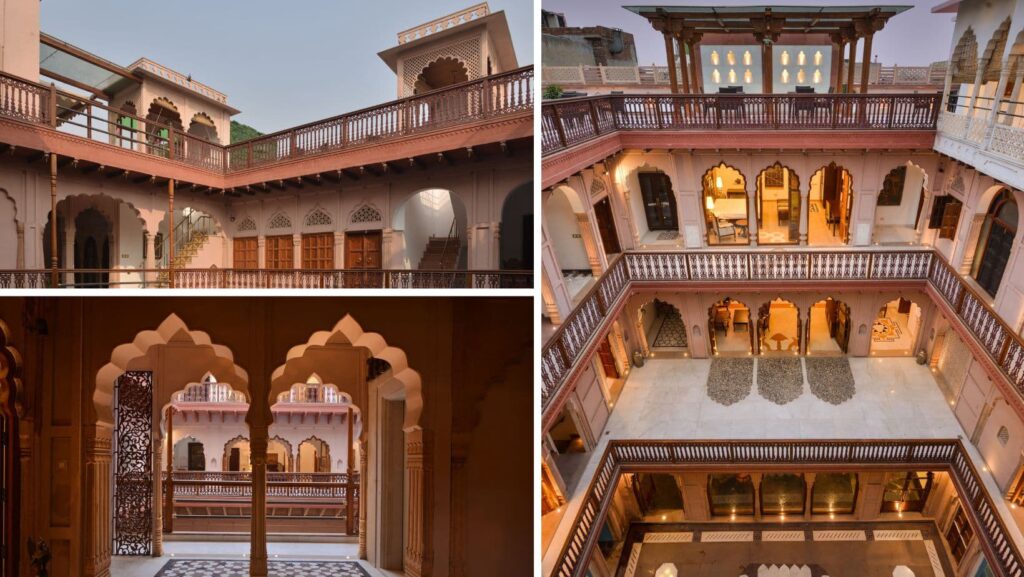
If you love the idea of an authentic and unique Old Delhi stay, see this UNESCO-awarded heritage haveli (traditional manor house). The 200-year-old property has been lovingly restored to create a boutique hideaway of just 14 rooms and suites. Haveli Dharampura is a charming haven in the heart of Old Delhi.
Budget:
Maidens Hotel This heritage hotel dates back to 1903 and certainly impresses with its pearl-white façade and lush grounds (look out for the resident peacocks). Comfortable rooms and suites, many with bathtubs, are complemented by two onsite restaurants and a bar.
Day Two: New & Old Delhi tour
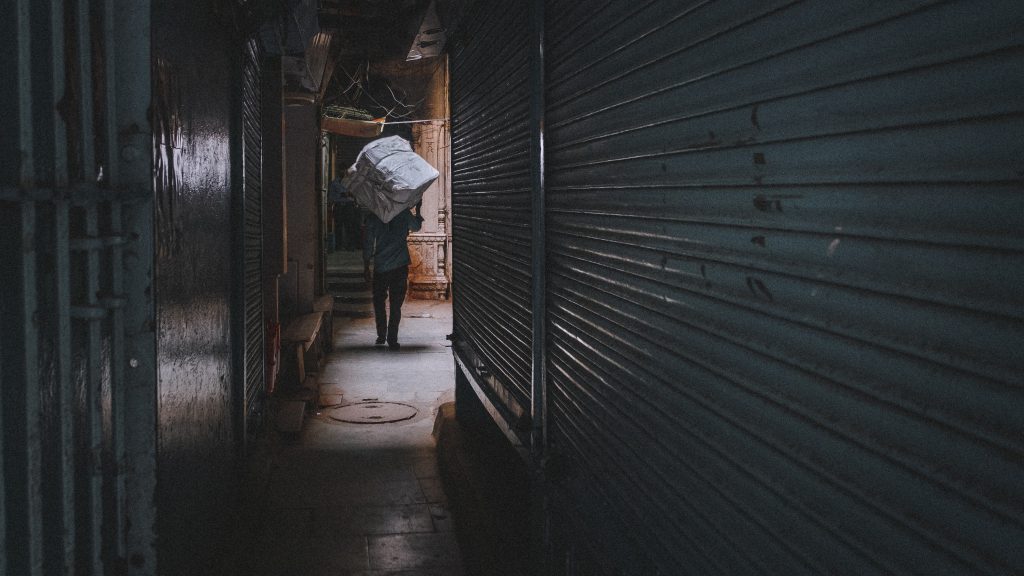
Delhi, the capital of India, is a city that seamlessly blends the old with the new. With a history that dates back centuries, this vibrant city is a cultural and political hub that offers a plethora of experiences for visitors. Be sure to visit both Old and New Delhi to get a full sense of the city’s unique character.
Whether you opt for a guided tour or prefer to explore on your own, our suggestions on how to spend your day(s) should provide an unforgettable experience in this fascinating destination.
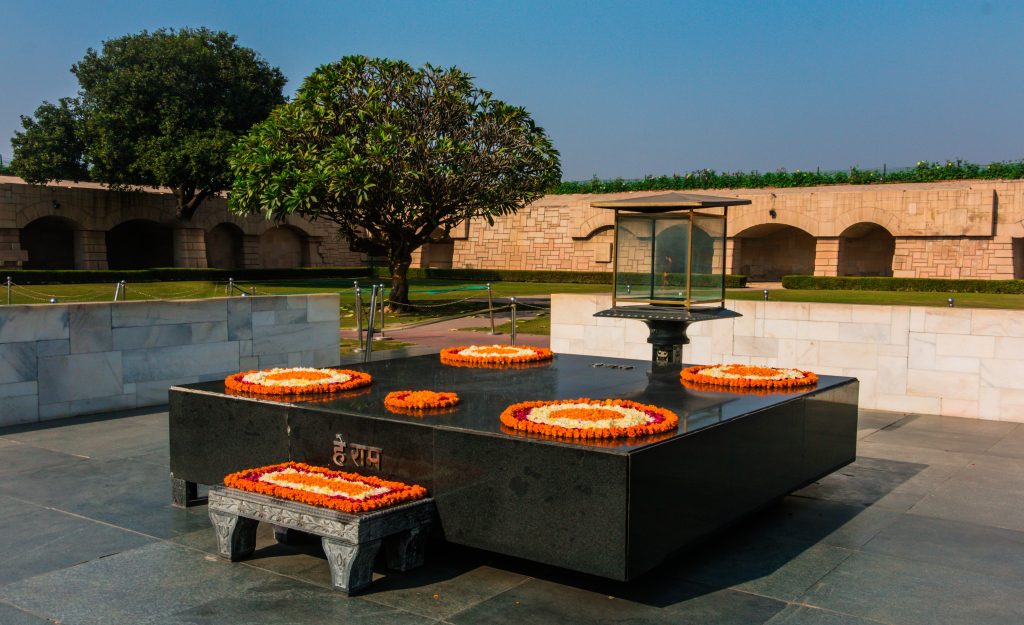
First stop: Raj Ghat pays tribute to Mahatma Gandhi, the father of the nation. This black marble platform (open to the sky with an eternal flame at one end) is surrounded by lush lawns and serves as a reminder of Gandhi’s nonviolent approach to political change, which played a crucial role in India gaining independence from British colonial rule. An ideal way to start your Delhi tour.
Next stop is The Red Fort, an impressive palace fortress constructed by the fifth Mughal Emperor of India, Shah Jahan, during the mid-17th century. It has been a symbol of power throughout Indian history, witnessing the transition to British rule and the celebration of Indian independence, serving as the backdrop for annual Independence Day celebrations. The Fort’s towering red sandstone walls enclose a complex of palaces, entertainment halls, balconies, baths, indoor canals, gardens, and an ornate mosque. In 2007, the Red Fort was designated a UNESCO World Heritage site, representing the cultural intermingling that the Mughals brought to India by fusing Persian, Timurid, and Hindu traditions. Keen photographers should allocate some decent time here!
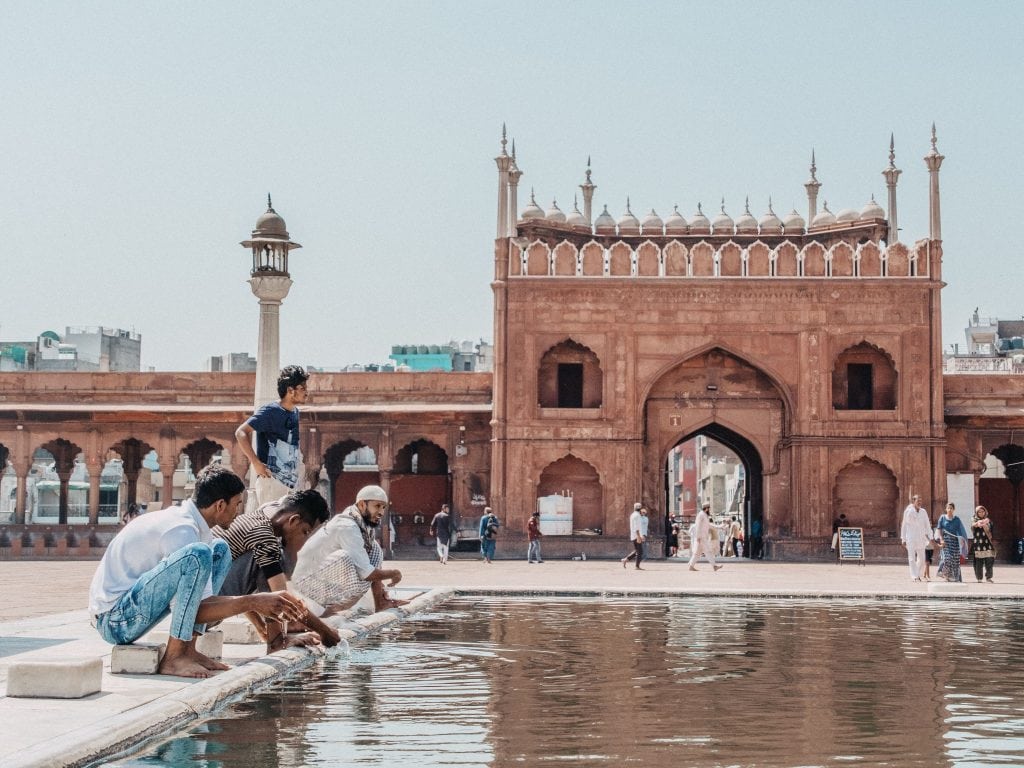
Not far away is Jama Masjid. With a capacity of 25,000 people, it’s the largest mosque in India and features three grand gateways, four angle towers, and two minarets made of alternating red sandstone and white marble. Visitors must climb over 30 steps to enter and wear appropriate attire, which can be rented at the entrance. The construction of Jama Masjid began in 1644 and was completed in 1656, with over 5,000 workers employed during the building process. It was the last structure built by Emperor Shah Jahan, who had a grand vision for the mosque, calling it the Masjid-i-Jahan-Numa, which translates to “mosque commanding view of the world” before his downfall.
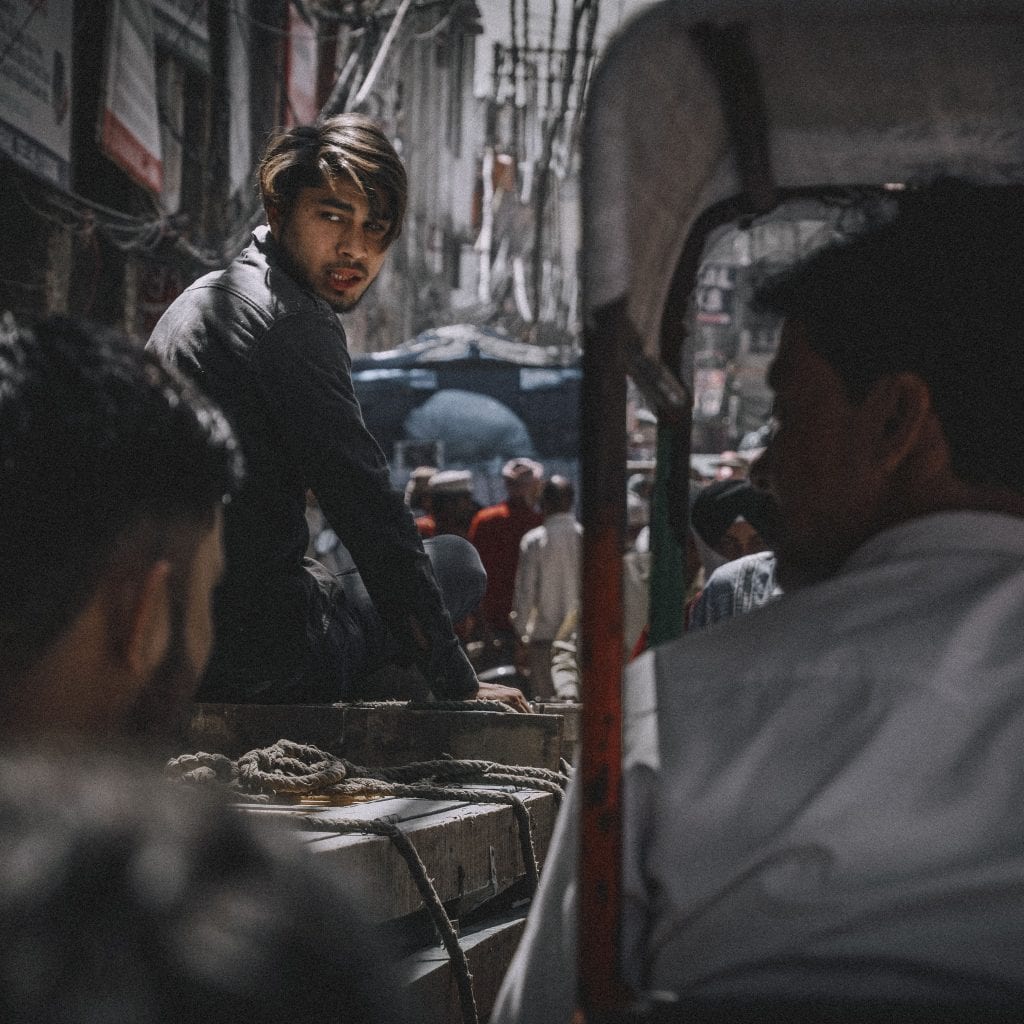
To fully experience the lively atmosphere of Old Delhi, take a rickshaw tour through the vibrant shopping bazaar of Chandni Chowk. This bustling area is a sensory delight, with colourful stalls and delicious street food vendors lining the narrow lanes. While it may be chaotic and noisy, it’s an unforgettable way to immerse yourself in the energy of India. We negotiated with a rickshaw driver outside the mosque, but you can also book an organised tour in advance.

Gurdwara Sis Ganj Sahib, situated in Chandni Chowk, is a must-visit if you have the time. It is the second largest Gurudwara in Delhi and holds immense importance for the Sikh community. This sacred site is where their 9th Guru, Guru Tegh Bahadhur, was tragically beheaded. People from all over the world come to this holy place for pilgrimage, and we were granted entry after confirming that we did not have cigarettes with us (remember to seek permission).
Next stop is the Laxminarayan Temple, also referred to as Birla Mandir. Constructed in 1939 the temple is dedicated to Laxmi, the goddess of prosperity, and Narayana, the preserver. Mahatma Gandhi inaugurated the temple on the stipulation that people of all castes would be allowed inside, and it now serves as a representation of unity and inclusivity.
Other popular stops include India Gate, a 42-metre high war memorial, and Rashtrapati Bhavan, the palace-like home of India’s President.
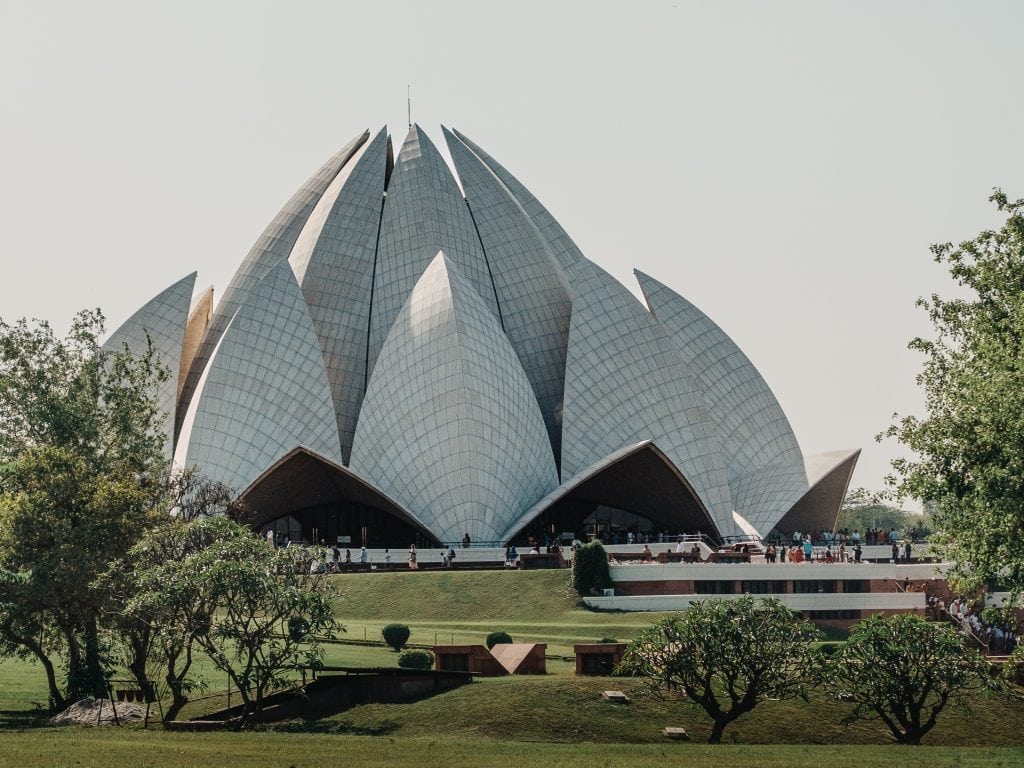
One of the highlights of Delhi for me, as I’ve been interested in the Bahai faith for some time, was visiting the beautiful Lotus Temple, also known as the Bahai Temple. The temple’s unique lotus-shaped design symbolises purity, peace, and unity, reflecting the core values of the Bahai faith. Adherents of any faith can visit, pray or meditate at this dazzling architectural temple and it offers a moment of calm to close out your day.
Day Three: Delhi – Jaipur ‘The Pink City’ (approx. 265 km day)
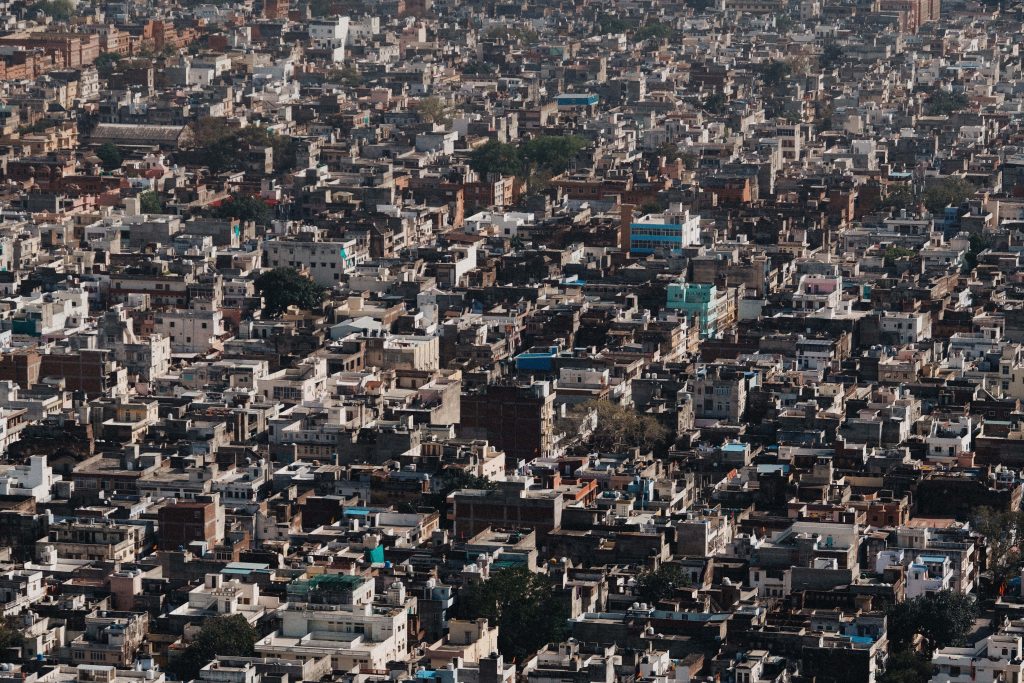
Today you will travel to Jaipur, the capital of Rajasthan. To reach Jaipur from Delhi, you have a few options. Private transfers are the quickest and most convenient at around 4.5 hours, and we chose this as it allowed for flexibility in the schedule. You can also fly or catch a train if you want to meet locals, travelling on a budget and experience the journey. Public buses are available but not recommended if this is a special occasion trip as they can be uncomfortable and time-consuming.
Jaipur, also known as the Pink City, is a stunning destination in India, famous for its pink-washed buildings. It’s a welcoming and inviting place to visit — in fact, the colour pink is associated with hospitality in Rajput culture.
The city is steeped in history and tradition, with grand palaces that still house royalty. Visitors can explore the colourful bazaars, shop for Rajasthani textiles and trinkets, or take in the beautiful gardens, parks, and monuments that make Jaipur a truly unforgettable destination.
Related article: Temples and Tea in India’s Jaipur ~ A guide to exploring India’s Pink City.
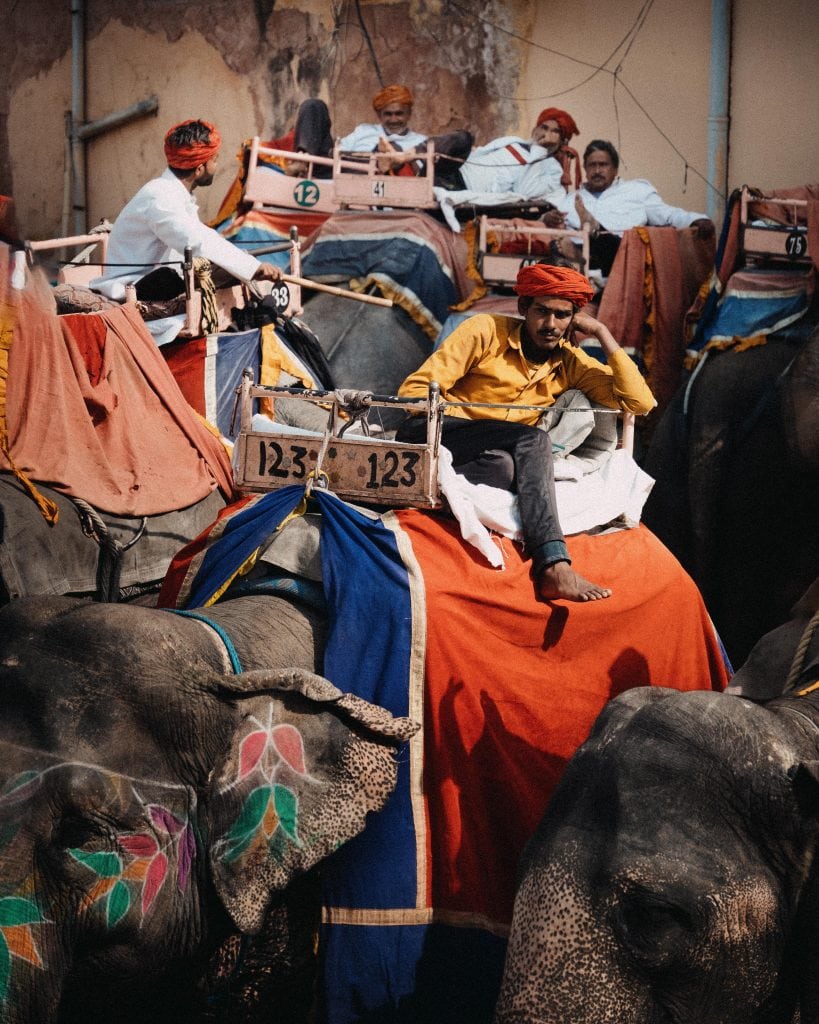
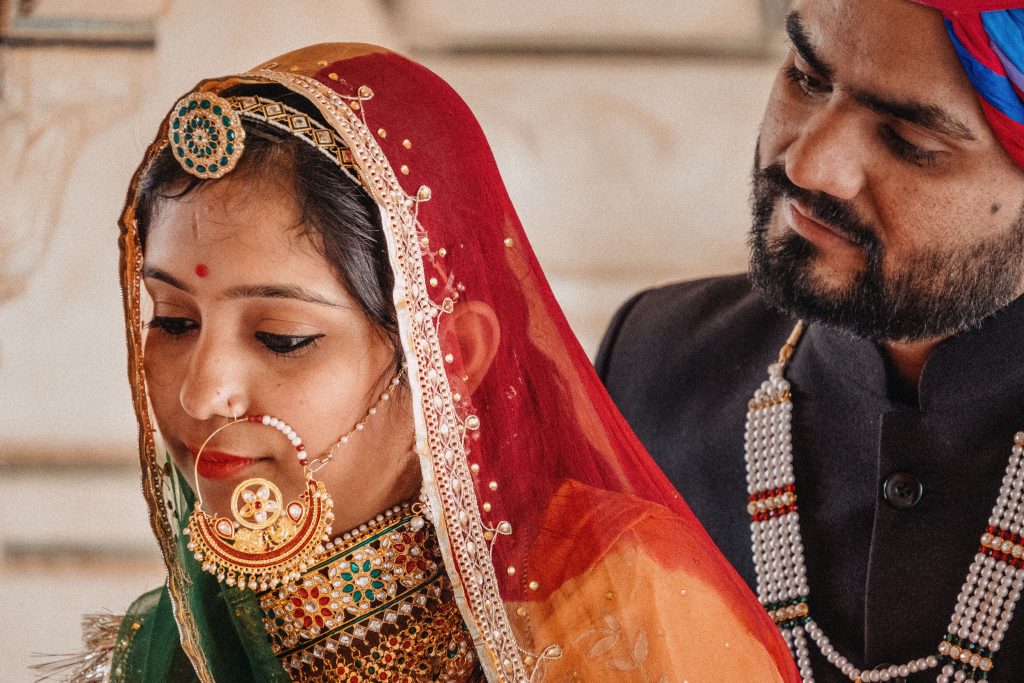
You’ll arrive in Jaipur early afternoon if you leave Delhi around 9 am (you want to dodge the hectic morning traffic but still hit the road early enough to make the most of the afternoon). We suggest you start with Amber Fort, located just 11 km away from the city. Once the stronghold of the Kachwaha clan of Amber, this stunning fort is built with a combination of white marble and red sandstone. The presence of the Maota Lake in the foreground makes it even more picturesque.
Where to stay in Jaipur
Splurge:
Fairmont Jaipur
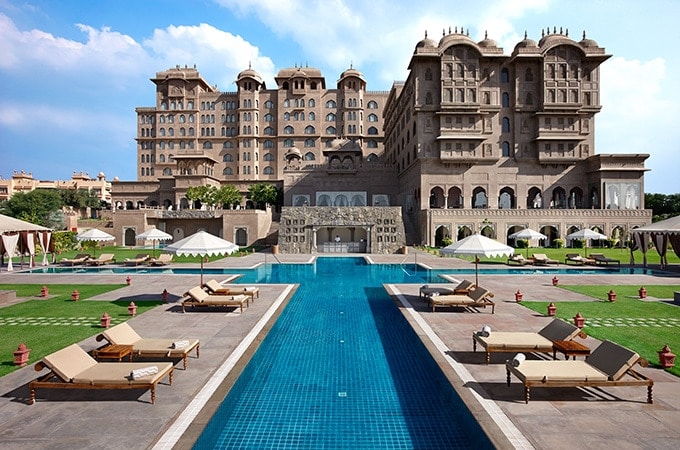
Exotic, luxurious, and oh-so romantic, the Fairmont Jaipur will have you feeling like royalty. Inspired by the region’s grand Mughal palaces, Fairmont Jaipur showcases the artistic heritage of Rajasthan with modern comforts and sumptuous details including four-poster beds, hammam-style bathtubs, and a day spa. Plump for a suite to enjoy glorious views to the Aravali hills.
Step inside the Fairmont Jaipur with H4C Editor Natalie Bannister’s review here.
Rambagh Palace
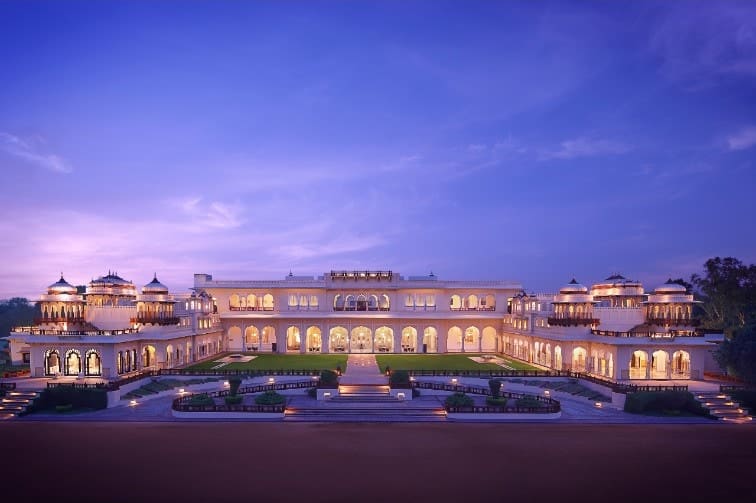
When it comes to gorgeous accommodation in India, Jaipur has you spoiled for choice. Another one for the shortlist is Rambagh Palace, a grand resort that was once a hunting lodge for the Maharajah of Jaipur. Set amidst 47 acres of beautifully landscaped gardens with two swimming pools, this Pink City stunner is perfect for two.
Umaid Vilas
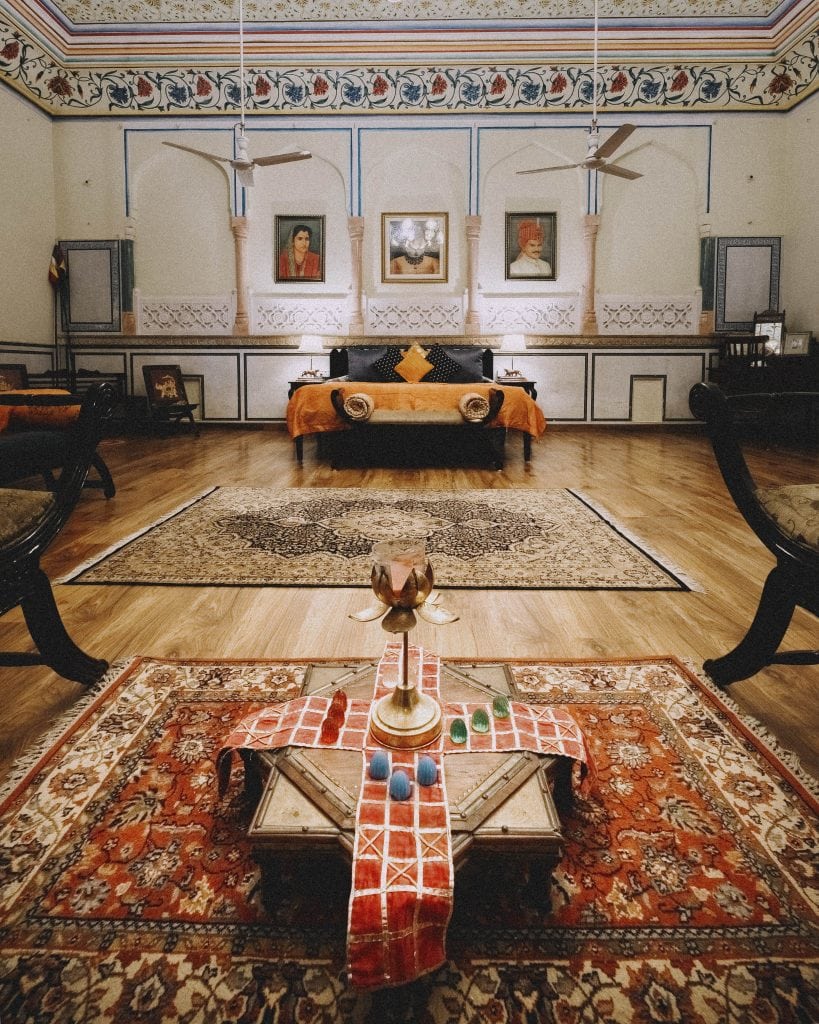
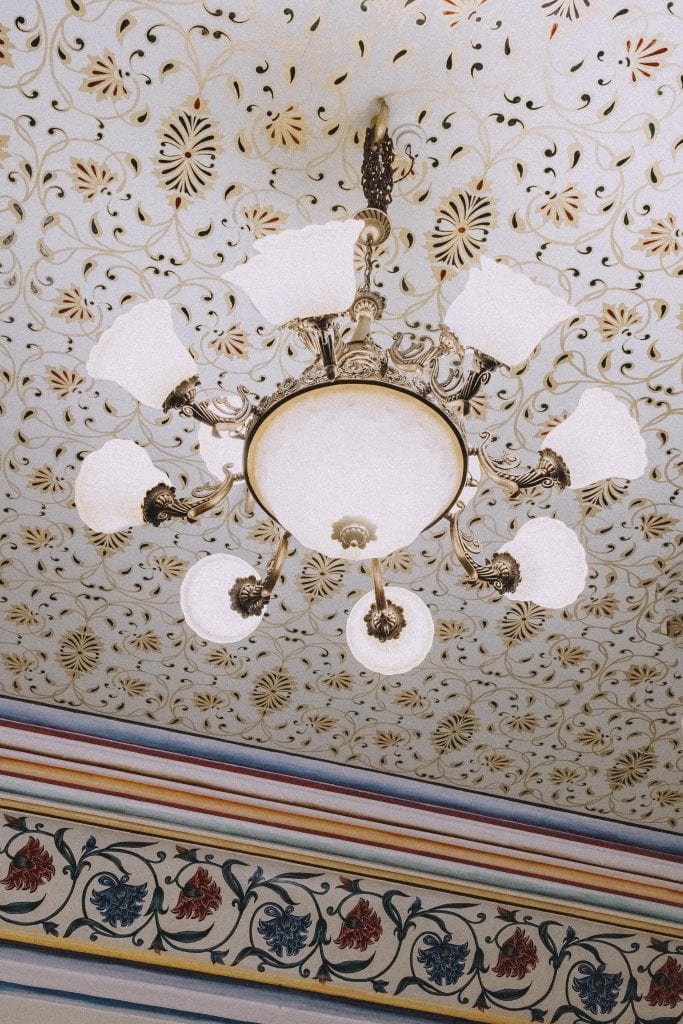
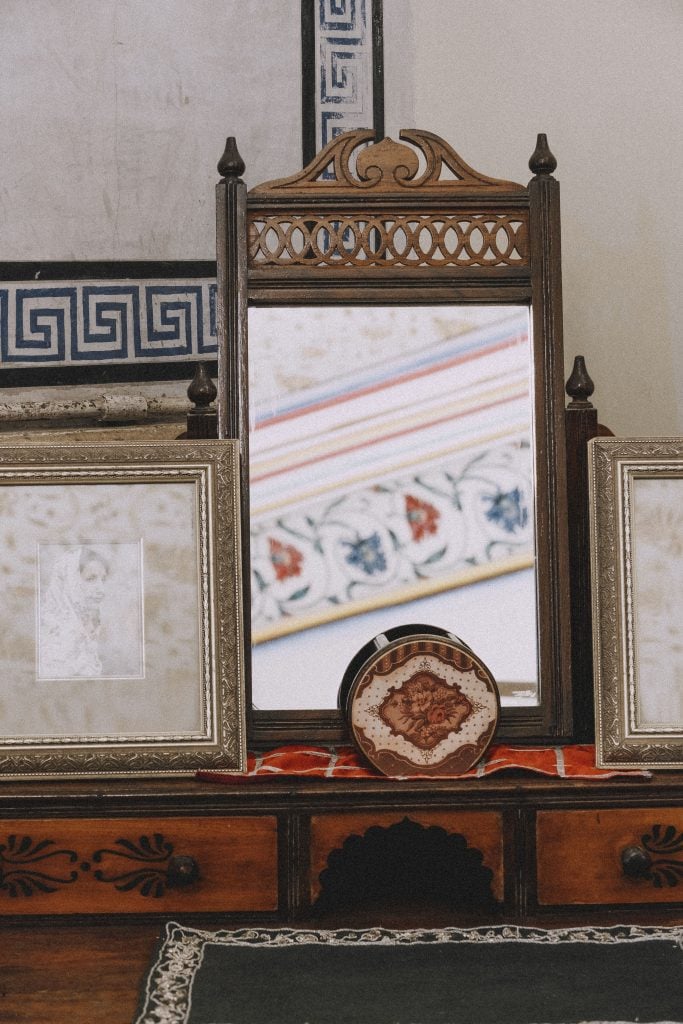
Umaid Vilas is a stunning historic residence located in the heart of Jaipur. While it may not be as extravagant as some of the country’s renowned luxury hotels and resorts, it offers a level of comfort and elegance that surpasses mid-range accommodations. The exterior of Umaid Vilas may not immediately capture your attention, but the interior of the living quarters is truly breathtaking. Despite the plural in its name, Umaid Vilas consists of a single, spacious apartment beautifully decorated in a traditional Indian style. Guests have the privilege of enjoying the entire space during their stay.
The residence is meticulously renovated and maintained, offering all the modern comforts while exuding an old-world charm. We moved from our hotel, which was 20 minutes outside of the historic walled city, to Umaid Vilas as we wanted to be central and enjoy easy access to popular tourist attractions such as the City Palace, Jantar Mantar Observatory, Wind Palace, and Albert Hall. As far as location goes, it would be hard to find somewhere to stay that is more central in Jaipur!
Govind, the caretaker, is fantastic and is always on hand to help with anything, from restaurant recommendations to booking tours and making a delicious breakfast. With a total area of 3500 sq. ft, the well-equipped and beautifully furnished large bedroom, bathroom and kitchen that make up this apartment ensure a relaxing stay, with Wi-Fi available throughout the residence.
Budget:
Hotel Sarang Palace. Its vibrant décor, spacious rooms, and signature candlelight dining experiences make this three-star option worth a look.
Day Four – Jal Mahal, City Palace & Walking Jaipur
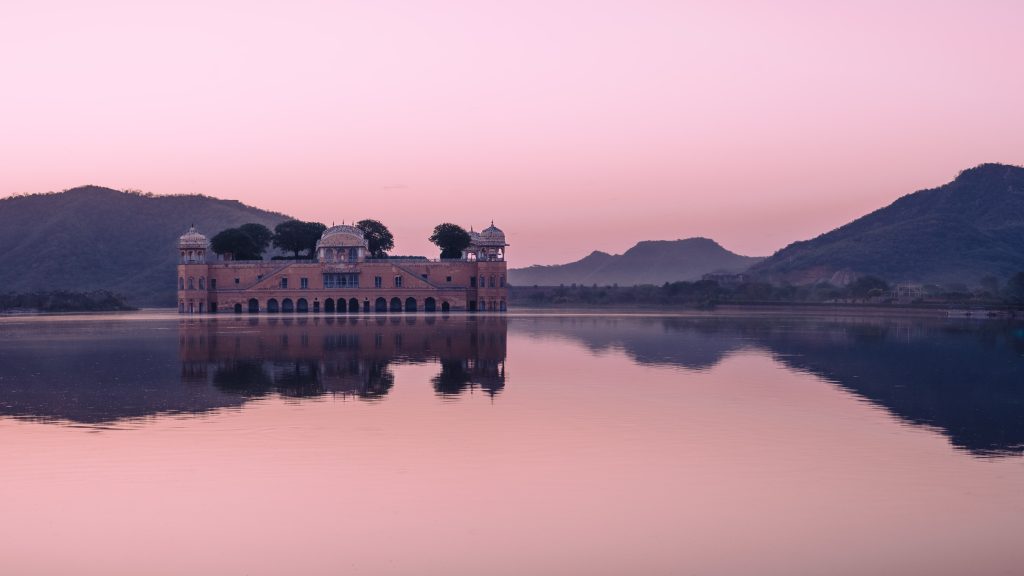
Located in the middle of Man Sagar Lake in Jaipur, Jal Mahal, also known as the Water Palace, is a stunning island palace that dates back 300 years. While its exact origins and builder remain a topic of debate, it is believed to have been used for Maharajah picnics and duck-hunting events. The palace features a pavilion with a terrace garden and no chambers.
In the 18th century, a Maharaja renovated and enlarged the palace, which is now a popular tourist attraction and an example of Rajput-style architecture. We suggest you visit as early as possible to experience the palace’s haunting beauty with the best light and fewer crowds.
For the afternoon, consider taking a tour with a local guide or grab a map and explore the highlights independently. Start by visiting the City Palace, a stunning blend of Rajasthani and Mughal architecture that was once the royal residence. Or head to nearby Jantar Mantar, the largest of the five observatories built by Sawai Jai Singh.
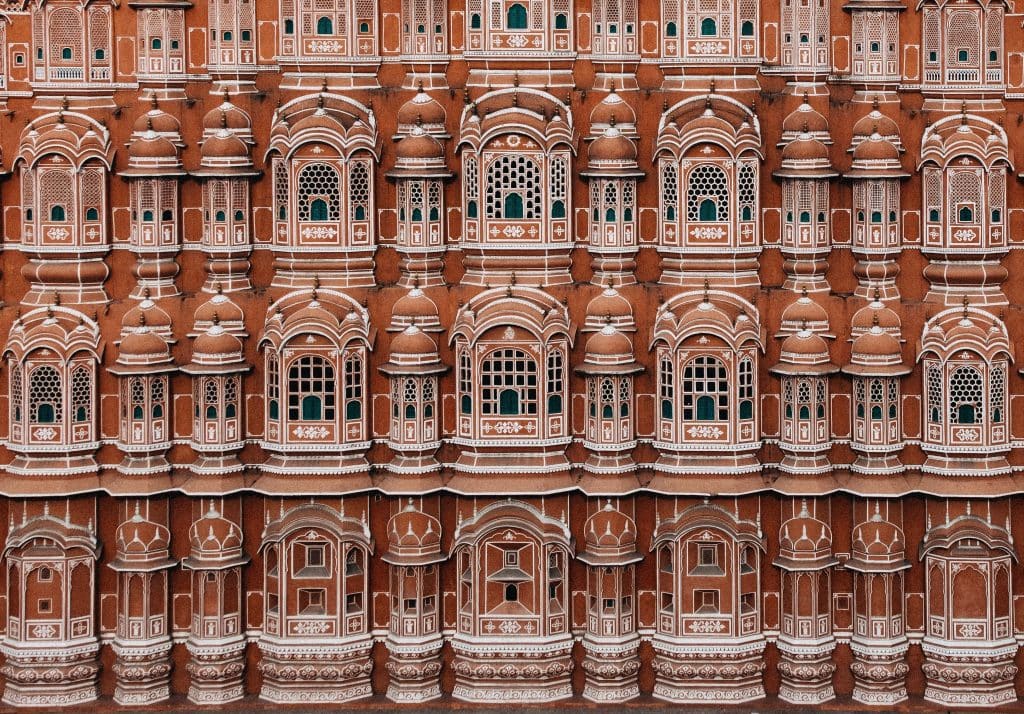
Just don’t miss Hawa Mahal, also known as the Palace of Winds. This magnificent palace was constructed in 1799 by Sawai Pratap Singh as a summer getaway for himself and his family and a place for the royal women to observe daily life without being seen. The five-storey building is a stunning combination of Hindu and Islamic architecture, with a unique exterior featuring small, latticed windows that resemble Lord Krishna’s crown. These windows also act as a natural air conditioner, making the palace a cool and comfortable retreat during hot summers.
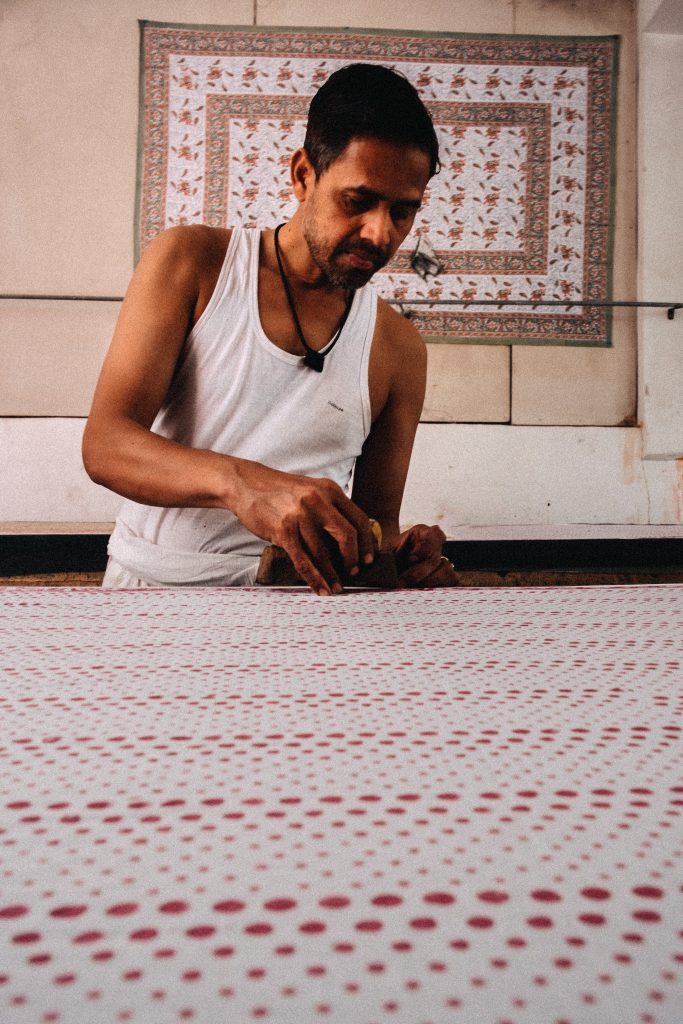
Block printing is a traditional technique that has been used for centuries in Rajasthan, India. This method involves hand printing on textiles using carved wooden blocks. If you have time left over this afternoon and you’re interested in learning more about block printing, you can ask your guide to take you to a demonstration or visit the Anokhi Museum of Block Printing near Bihariji Temple.
Related: Get off the beaten path with a romantic adventure in Rajasthan’s desert.
Day Five: Jaipur to Agra with a stop at Chand Baori Step Well (approx. 245 km)
After breakfast, depart for Agra. On the way, you will visit Chand Baori Step Well, located opposite Harshat Mata Temple. It is believed that the Chand Baori Step Well has a religious connection, and that’s the reason it was built in front of the temple.
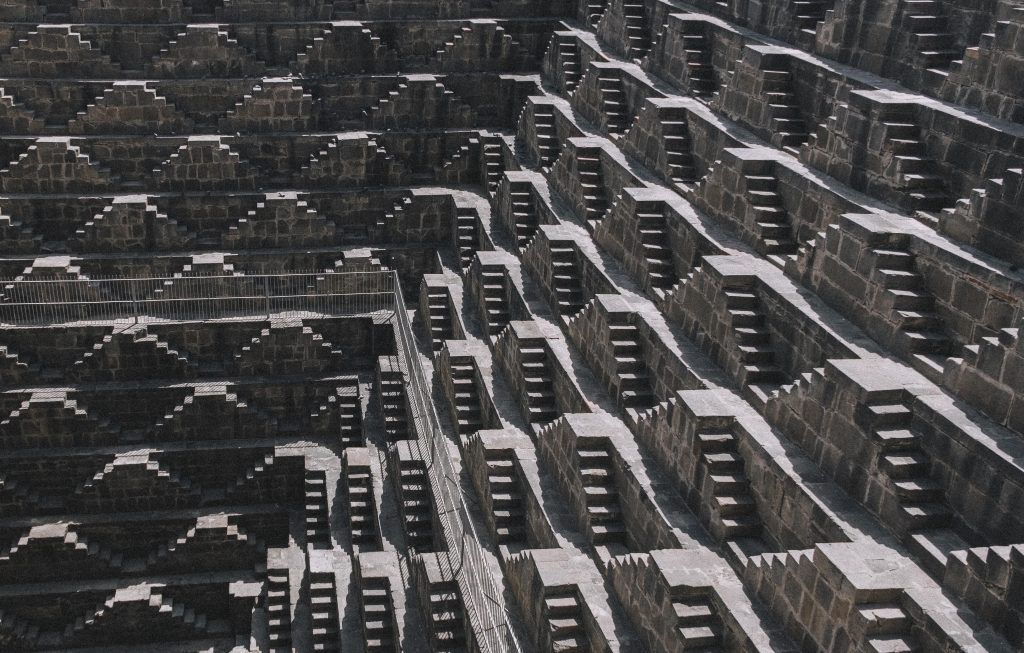
Agra, known as the City of the Taj, is steeped in Mughal history and culture and truly captures the essence of India’s rich cultural heritage. The Taj Mahal, a symbol of love and beauty, is one of the most famous landmarks in the world and draws visitors from all over the globe.
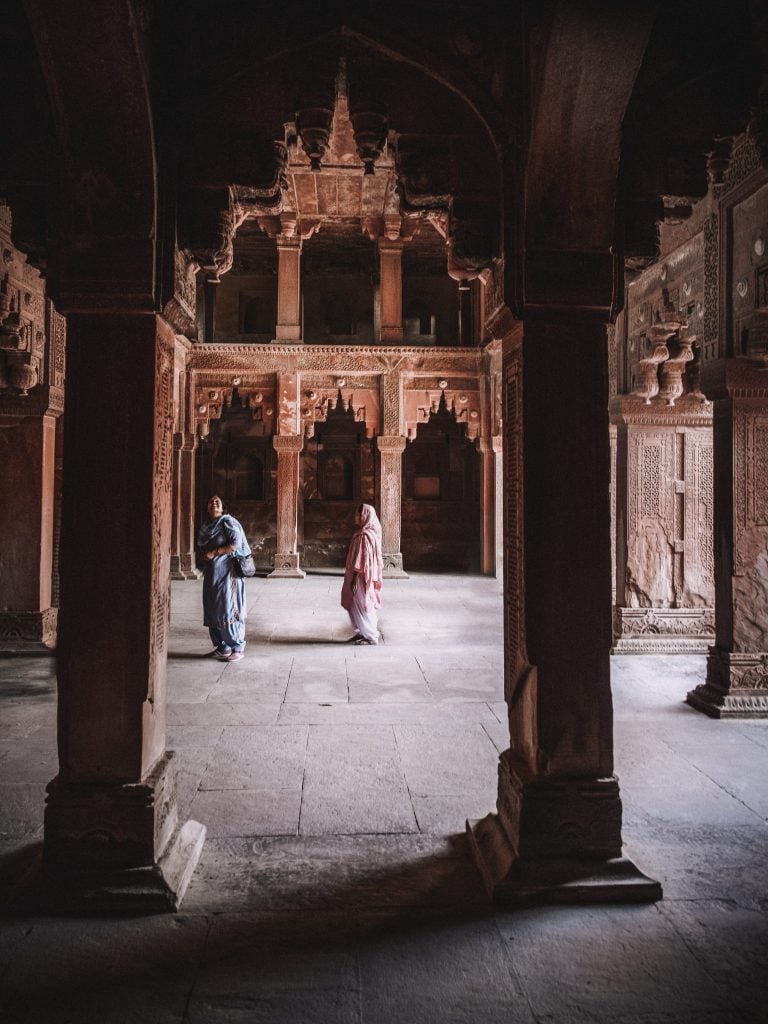
Head straight to the UNESCO World Heritage listed Agra Fort (Red Fort), which boasts a stunning display of ornamentation and is said to have once housed the Kohinoor diamond. The artwork inside blends Persian, European, and Indian styles, resulting in a unique and vibrant Shahjahani style. The Fort’s architecture and garden design have influenced later buildings and gardens in Delhi, making it an important piece of India’s history and culture.
Where to stay – Agra:
Splurge:
The Oberoi Amarvilas
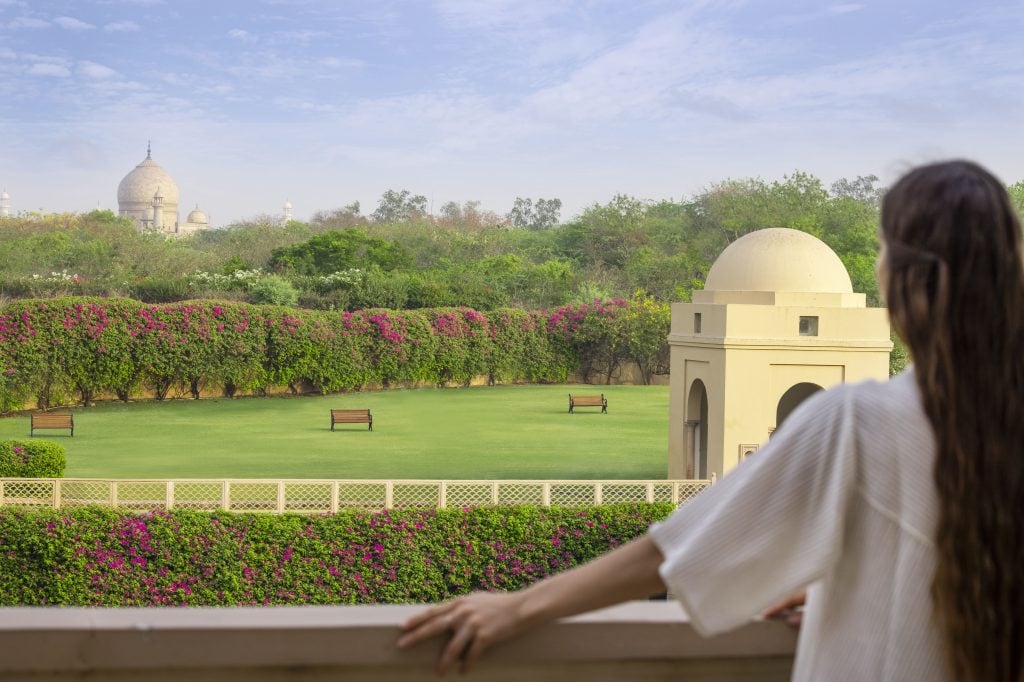
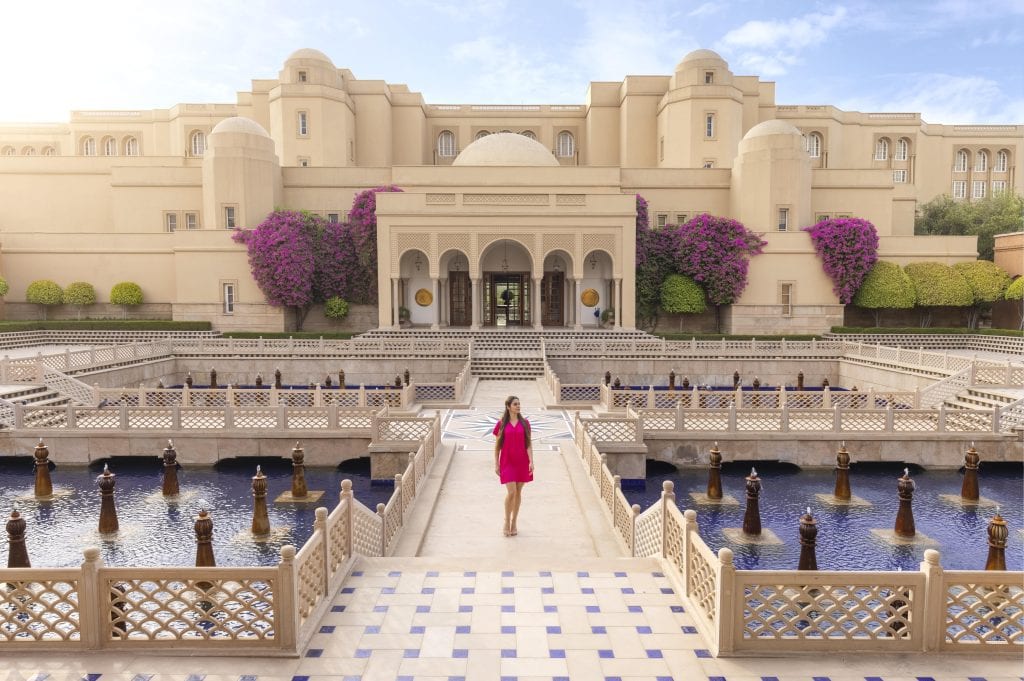
The Oberoi Amarvilas is a renowned five-star hotel known for its luxurious accommodations and stunning views of the Taj Mahal. Situated a mere 600 meters away from the iconic monument, the hotel draws inspiration from Mughal palace designs, offering guests a truly opulent experience. Each room and suite is thoughtfully designed, with many featuring balconies that provide breathtaking vistas. In addition to its exquisite accommodations, the hotel boasts a variety of dining options and a top-notch spa, ensuring guests have a truly indulgent stay. With its grand design and impeccable craftsmanship, The Oberoi Amarvilas has rightfully earned its reputation as one of India’s most celebrated hotels.
Budget:
Tajview This budget-friendly option just three kilometres from the Taj Mahal features well-appointed rooms and suites as well as pool and day spa to unwind after a day of sightseeing. If you can stretch the budget, look for the high-floor suites that offer view of India’s most beloved landmark.
Day six: Agra – Taj Mahal – Delhi
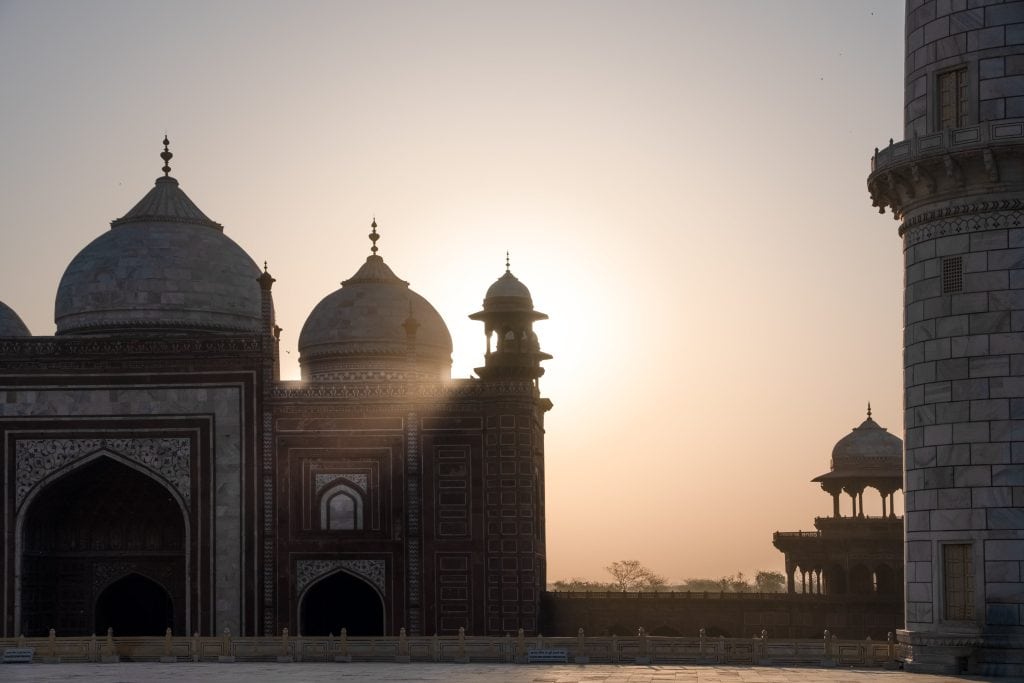
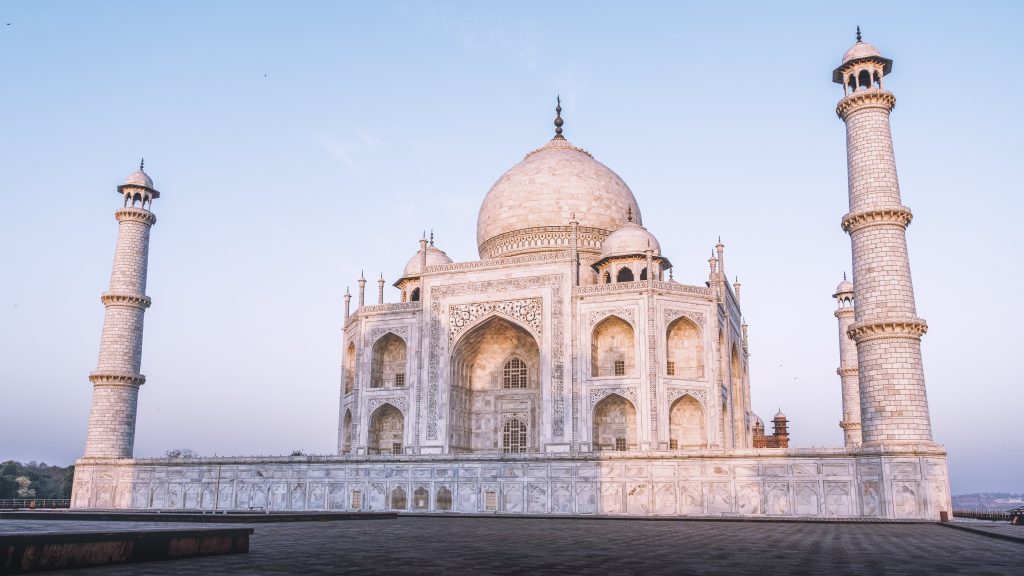
Today is sure to be a highlight of your Golden Triangle holiday or honeymoon. Rise early and visit the Taj Mahal just after sunrise. No photo or video can do justice to this incredible monument’s sheer beauty and magnificence — and seeing it as the sun rises is simply breathtaking.
The Taj Mahal was commissioned by the Mughal emperor Shah Jahan in 1631 as a tribute to his beloved wife Mumtaz Mahal (who had passed away), and took over 20 years to complete. Unlike earlier Mughal buildings which were made of red sandstone, India’s most iconic monument is made of white marble adorned with intricate inlays of semi-precious stones.
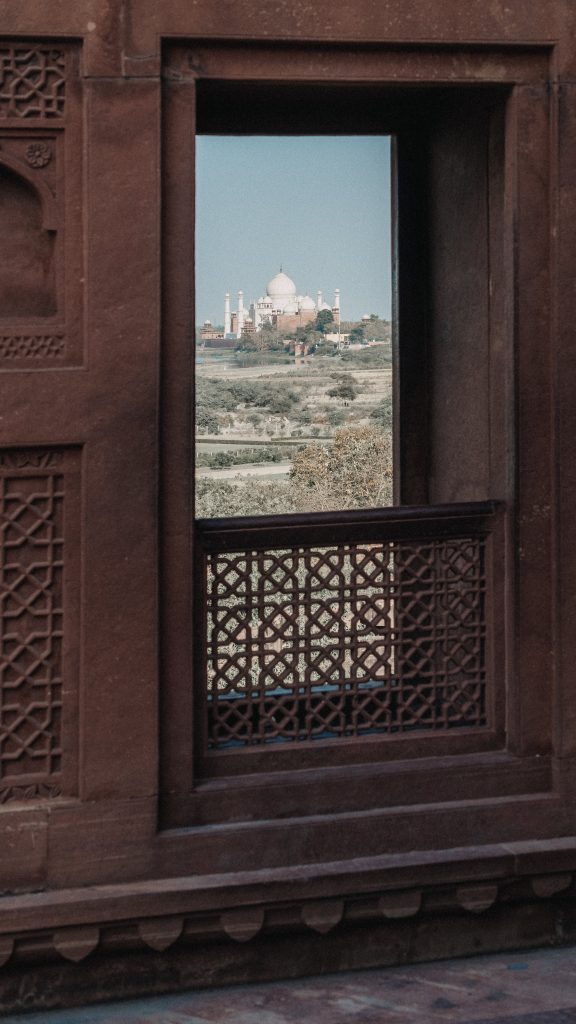
Early this afternoon, you’ll want to start travelling back to Delhi. The drive will take around four hours, depending on traffic.
Day seven: Choose your own adventure!
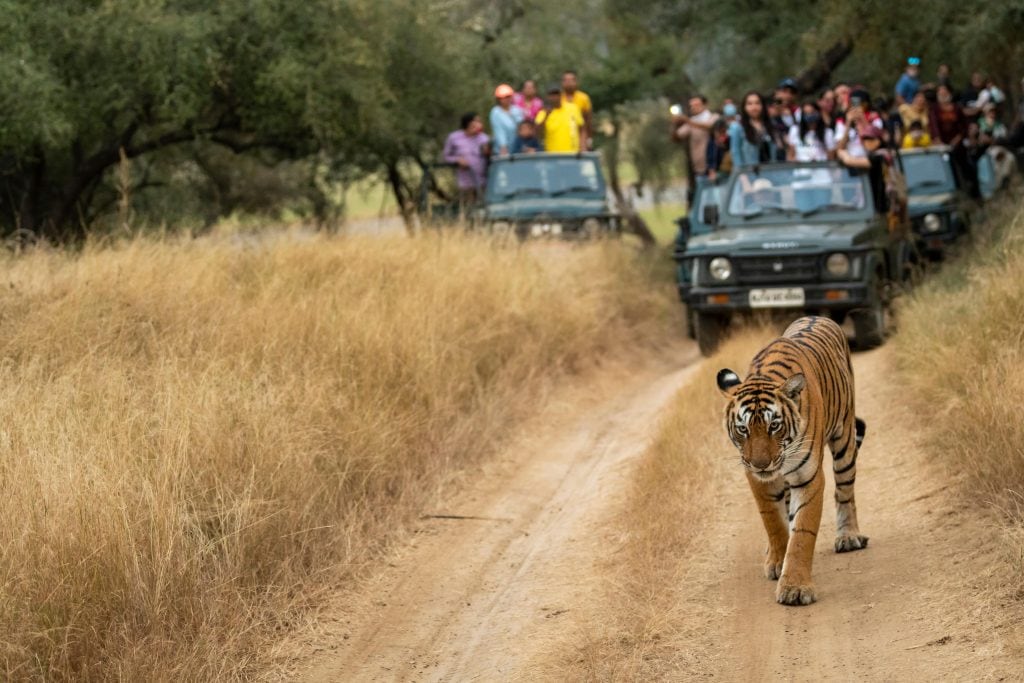
If you have more time and have chosen to use a driver, you could extend the Golden Triangle itinerary.
For wildlife enthusiasts, Ranthambore National Park is a must-visit. This former royal hunting ground is now a wildlife reserve and one of the best places in the country to spot wild Indian tigers on safari. Sariska National Park, near Jaipur, is home to growing numbers of leopards and tigers.
If you’re interested in history and culture, consider stopping in Mathura, the birthplace of Krishna, and Vrindavan, filled with beautiful temples, on your drive between Delhi and Agra.
We headed back to Delhi for a walking tour around Old Delhi for the final day of our Golden Triangle holiday.
Travel Tips for Your Golden Triangle Holiday
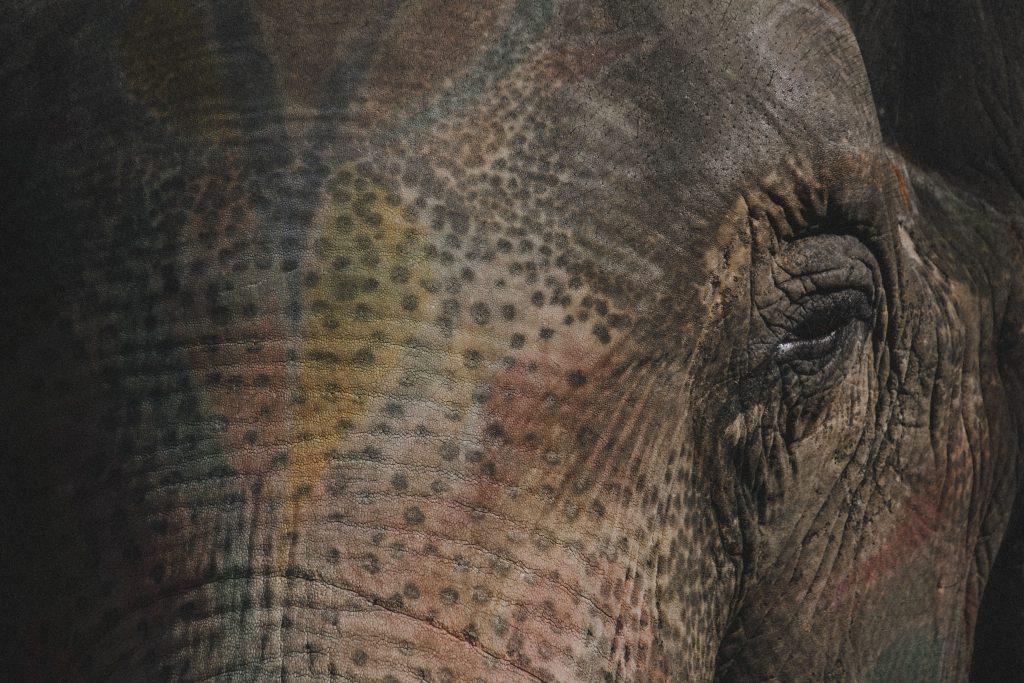
Where to stay and eat?
When it comes to accommodations, there are plenty of options in the Golden Triangle. We’ve given you some options for each destination in this article, but there are plenty of other accommodation choices. From luxurious hotels to budget-friendly guesthouses, there’s something for every type of traveller and budget in India. As for dining, try some local cuisine, such as dosas (a thin South Indian pancake), thali (a platter of small dishes), chaat (street food style snacks), and idli (savoury rice cake).
Tips for getting around India
When travelling in India, if you don’t feel comfortable negotiating with rickshaw drivers in the heat, consider using Uber or Ola. Uber allows you to pay through the app and even provides a maximum price to use as a bargaining tool with rickshaw drivers while Ola only accepts cash but offers slightly lower prices.
For train travel, 12Go Asia has revolutionised the booking process by allowing you to book online up to four months in advance with your debit card from home. This eliminates the need to queue for tickets or deal with travel agents who may scam you. Remember that 12Go takes a commission on sales, but the peace of mind that comes with having everything booked is worth it. Lastly, you can look at hiring a private driver.
Tips for a safe and enjoyable trip to India
While India’s Golden Triangle is a beautiful and exciting destination, taking precautions is vital to ensure a safe and enjoyable trip. Be sure to research the local customs and dress appropriately, especially when visiting religious sites. It’s also highly recommended to avoid drinking tap water and only eat food from reputable establishments. Finally, make sure to have all necessary vaccinations and travel insurance before embarking on your trip.
How to avoid Delhi belly while travelling in India

If you’re like us, one of your biggest worries about travelling to India is getting ‘Delhi belly’, a type of food poisoning that can ruin your trip. Despite my husband and I being in India for nearly two weeks, neither of us got sick! We followed these steps, and they seemed to work!
Eat vegetarian: India has the lowest amount of meat consumption in the world, with many locals following a (delicious!) vegetarian diet. It can be difficult to know if your dish is cooked properly or not, so excluding meat entirely is a safe bet. Food-borne illnesses such as E. Coli and Salmonella and other parasites and bacteria are common in food that’s not cooked properly. However, it’s also essential to be cautious with fresh fruits and vegetables, especially if they’re uncooked or peeled.
Use sanitiser: We’re probably all using more sanitiser now than pre-pandemic, but, again, I think this went a long way toward neither of us getting sick, as many cases of food poisoning in India are caused by touching contaminated surfaces and then touching your mouth (my husband caught amoebic dysentery in Egypt this way and he was the only one who didn’t use sanitiser before we sat down to eat. Consequently, he was big into the sanitiser in India!). You can also use hand sanitiser to sterilise utensils at restaurants that may have been washed with dirty tap water.
By following these tips, you can enjoy India’s delicious food and vibrant culture without worrying (too much!) about getting sick.
